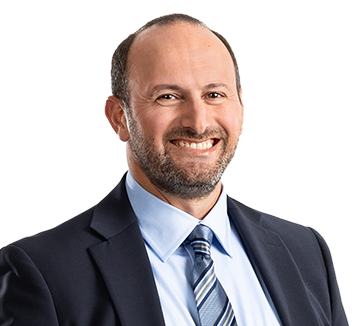ARTICLES & PUBLICATIONS
Since the Eighth Circuit’s decision in U.S. ex rel. Cairns v. D.S. Medical LLC,1 more courts have adopted the but-for causation standard for False Claims Act cases premised on underlying violations of the Anti-Kickback Statute (AKS) that Cairns articulated.2 On February 18, 2025, the First Circuit issued its opinion in U.S. v. Regeneron Pharmaceuticals Inc.,3 joining the Sixth and Eighth circuits in adopting this standard.
Many court observers have focused on the analysis underpinning the adoption of the but-for standard. And the First Circuit’s Regeneron opinion will likely receive a great deal of attention in the coming weeks for its expansive discussion of an alternative path to FCA liability. The alternative path would allow plaintiffs to demonstrate FCA liability based on false certification of compliance with the AKS, without relying on the 2010 AKS amendment and the accompanying but-for causation standard.
While those topics are certainly worthy of analysis, we focus on a related but less-discussed issue: what plaintiffs must demonstrate to satisfy but-for causation. The district court in Regeneron observed that adopting a but-for causation standard did not mean that the government’s burden would be “insuperably difficult.”4 The court found it likely that plaintiffs would only need to show that the AKS violation was a substantial factor, rather than the only cause of the resulting false claim.5 The First Circuit’s subsequent opinion did not disturb this analysis.
Two recent cases indicate that satisfying the but-for causation standard may pose more of a challenge for plaintiffs than the Regeneron court suggested.
Sunovion6
In Sunovion, the District of Minnesota applied an exacting standard to dismiss a Relator’s complaint for the inability to prove but-for causation.7 The court addressed allegations that Sunovion (subsequently renamed Sumitomo Pharma America, Inc.) paid kickbacks in the form of rebates to pharmacies in exchange for favoring Sunovion’s chronic obstructive pulmonary disease drug, Brovana. Specifically, the complaint alleged that pharmacies would lose money on their Brovana prescriptions unless they signed a “Sunovion Part B Agreement.”8 The Relator’s allegations focused on two provisions of the Part B Agreement: one requiring pharmacies to “Dispense as Written” the prescriptions they received, and another prohibiting pharmacies from educating prescribing physicians about cheaper alternatives to Brovana (a practice known as “counterdetailing”).9
After the court dismissed the complaint once for failing to satisfy but-for causation, the Relator added several paragraphs in an amended complaint that were intended to satisfy that standard. The court observed that in the amended complaint, the Relator alleged that “pharmacies failed to substitute Brovana’s competitors in situations where, absent the [Part B] Agreement, they would have done so” and that Sunovion sales representatives did not promote Brovana in situations where they would have done so absent the Part B Agreement.10
The court indicated that the but-for causation standard required the Relator to “allege facts plausibly showing that signatory pharmacies would not have included Brovana prescriptions on Medicare claims absent the Part B Agreement’s rebates-for-prescriptions arrangement.”11 It then observed that the Relator alleged that “just the rebates Sunovion paid pharmacies that signed on to the Part B Agreement were the but-for cause of Brovana sales because the rebates made it possible for these pharmacies to sell Brovana without losing money.”12
The court held that this was not sufficient after Cairns because it did not amount to a plausible allegation that a kickback was the but-for cause of the resulting prescriptions. In explaining its reasoning, the court differentiated between two categories of Brovana prescriptions. A Brovana prescription issued only because the Part B Agreement’s rebate provision made it economically feasible to do so—and not because of the Agreement’s “dispense-as-written” and counterdetailing provisions—would not violate the AKS even though they were included in contracts intended to incentivize pharmacies to dispense Brovana. That is because a rebate is merely a discount, and not a kickback, if it is “conditional only on the purchase of a product.”13 For a prescription to violate the AKS, it would have to be written because of the “dispense-as-written” or counterdetailing provisions, which turned the rebate from a discount into a kickback. In the words of the court, “the Anti-Kickback Statute ‘violation’ alleged in the Second Amended Complaint encompasses the rebates in consideration for the dispense-as-written and counterdetailing provisions.”14
The court thus found that the Relator failed to “allege facts plausibly tracing causation through the Part B Agreement’s dispense-as-written and counterdetailing provisions—that is, but for signatory pharmacies’ rebates-induced compliance with these provisions, a pharmacy or pharmacies would have dispensed a drug or therapy other than Brovana.”15
In essence, the court held that merely alleging that the pharmacies dispensed Brovana because of the Part B Agreements themselves was not enough. That is because if a provider was induced to prescribe Brovana only by the rebate aspect of the agreements, it would not constitute a prohibited kickback. Rather, the Relator had to allege that the pharmacies dispensed Brovana because of specific elements in the Part B Agreements: the dispense-as-written and counterdetailing provisions. This presents a steep challenge for plaintiffs.
Omni
More recently, in Omni Healthcare, Inc. v. MD Spine Solutions LLC, a decision issued shortly before (and subsequently cited in) Regeneron, a district court in Massachusetts applied the but-for causation standard in a similar manner on summary judgment.16 The Relator in Omni alleged that the defendant paid sales commissions to independent-contractor sales representatives involved in marketing the defendant’s urinary tract infection tests, thereby providing something of value in exchange for referrals in violation of the AKS.17 The court acknowledged that although a safe harbor protects commissions paid to employees, there is no such protection for independent contractors.18 It also recounted that outside counsel had told the defendant on multiple occasions that commission payments to independent contractor sales representatives could violate the AKS.19 But the court “beg[an] and end[ed] its analysis with Defendants’ [but-for] causation argument,” which proved fatal to the Relator’s claim.
Applying the but-for causation standard, the court explained there was “no evidence that the independent-contractor status of some of its sales representatives unduly influenced any provider’s decision[.]”20 There was no evidence that the defendant trained its independent contractor sales representatives to do anything different from its employed sales representatives, nor any evidence that they had acted any differently.21 Since both groups were attempting to influence referrals, and one was protected by a safe harbor, the court concluded that the commission payments made to independent contractor payments did not “unduly” influence referrals.22
The court also discussed the relator’s allegations that the defendants’ sales representatives had engaged in discussions about the relator sharing profits on the referrals it made on tests ordered from the defendant. The court characterized these as “troubling discussions” and did not credit the defendants’ argument that the discussions could have been lawful, but concluded that the record lacked evidence that the parties had consummated any agreement to that effect. Accordingly, the contemplation of a potentially illegal arrangement did not cause the submission of any false claims.23
Finally, the court found that the Relator could not point to any payments that were the but-for cause of referrals because the relator had only made referrals to the defendant in order to generate support for its allegations. The commission-based payments were accordingly not the but-for cause of the claims for payment. The court therefore dismissed the complaint.24
Like Sunovion, Omni suggests that but-for causation will be a challenging standard to meet. Even when independent contractors who are not protected by safe harbors engage in potentially illegal conduct, and when the sales representatives engage in discussions of potentially illegal conduct, the standard is not satisfied.
Takeaway: Early returns suggest that the but-for causation standard may be even more difficult to satisfy than some predicted. In light of the First Circuit’s Regeneron opinion, we expect future FCA plaintiffs to focus their attention more directly on proving Anti-Kickback Statute violations under the alternative, false certification path the court discussed. It is not clear that courts will permit them to do so.
[1] 42 F.4th 828 (8th Cir. 2022).
[2] See, e.g., United States ex rel. Martin v. Hathaway, 63 F.4th 1043, 1052–55 (6th Cir. 2023).
[3] No. 23-2086, 2025 WL 520466 (1st Cir. Feb. 18, 2025)
[4] United States v. Regeneron Pharms., Inc., No. 20-CV-11217, 2023 WL 7016900, at *13 (D. Mass. Oct. 25, 2023).
[5] Id.
[6] Mr. Blumenfield worked on the Sunovion matter as an AUSA, but left the government before the court considered Sunovion’s motion to dismiss the amended complaint.
[7] United States v. Sumitomo Pharma Am., Inc., No. 17-CV-1719 (ECT/LIB), 2024 WL 4151357 (D. Minn. Sept. 11, 2024).
[8] Id. at *1
[9] Id. at *2.
[10] Id.
[11] Id. at *3; see also id. at *6 (citing Cairns).
[12] Id. at *4 (emphasis in original).
[13] Id. at *4. Interestingly, the First Circuit noted in its recent Regeneron opinion that “All parties assume for the purposes of this appeal that a rebate to the patient or doctor would be a kickback.” Regeneron, 2025 WL 520466, at *2. This issue was not material to the Regeneron holding, and it is not clear that the Regeneron parties’ assumption included “rebates” provided equally to all purchasers of a product. Such rebates are common in the pharmaceutical world.
[14] Id. at *5.
[15] Id.
[16] No. 18-CV-12558-PBS, 2025 WL 32676 (D. Mass. January 6, 2025).
[17] Id. at *7.
[18] Id. at *9.
[19] Id. at *1.
[20] Id. at *9.
[21] Id.
[22] Id.
[23] Id.
[24] Id.
Attorneys


